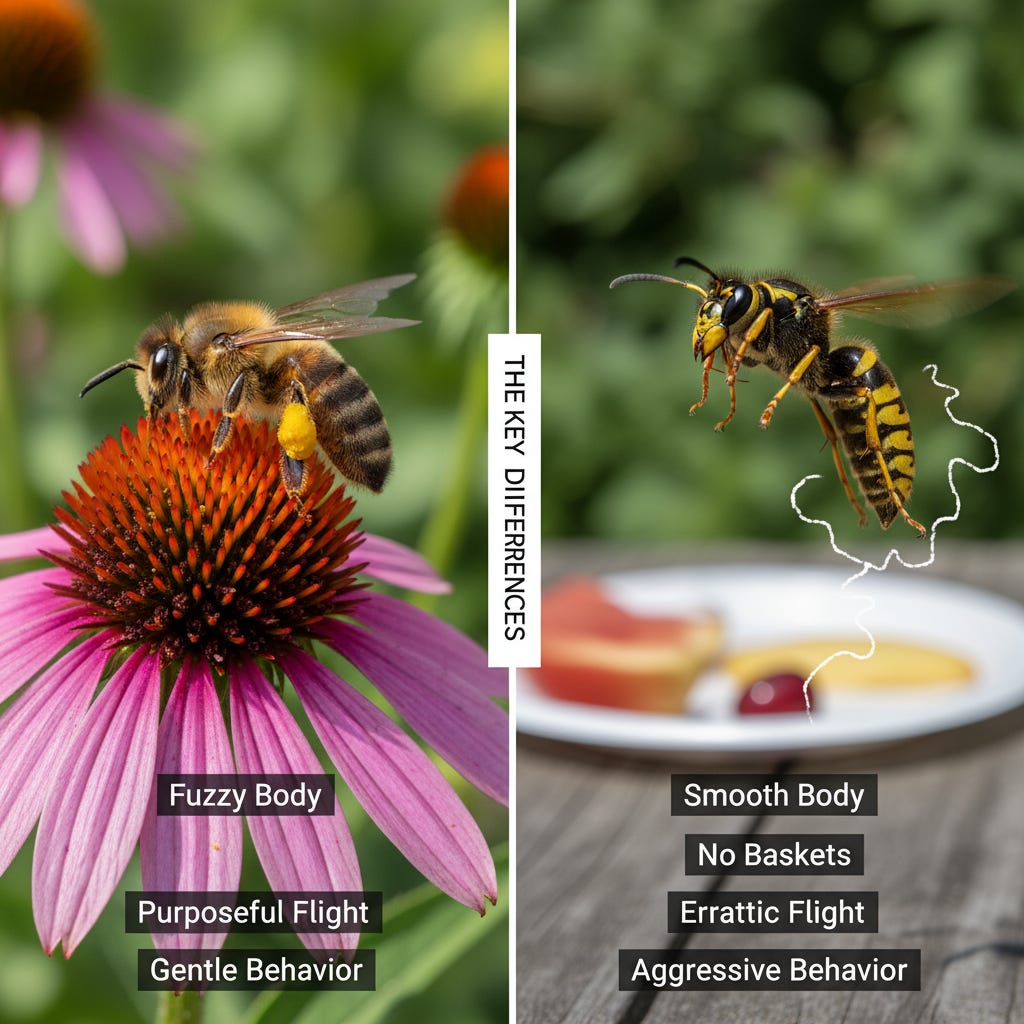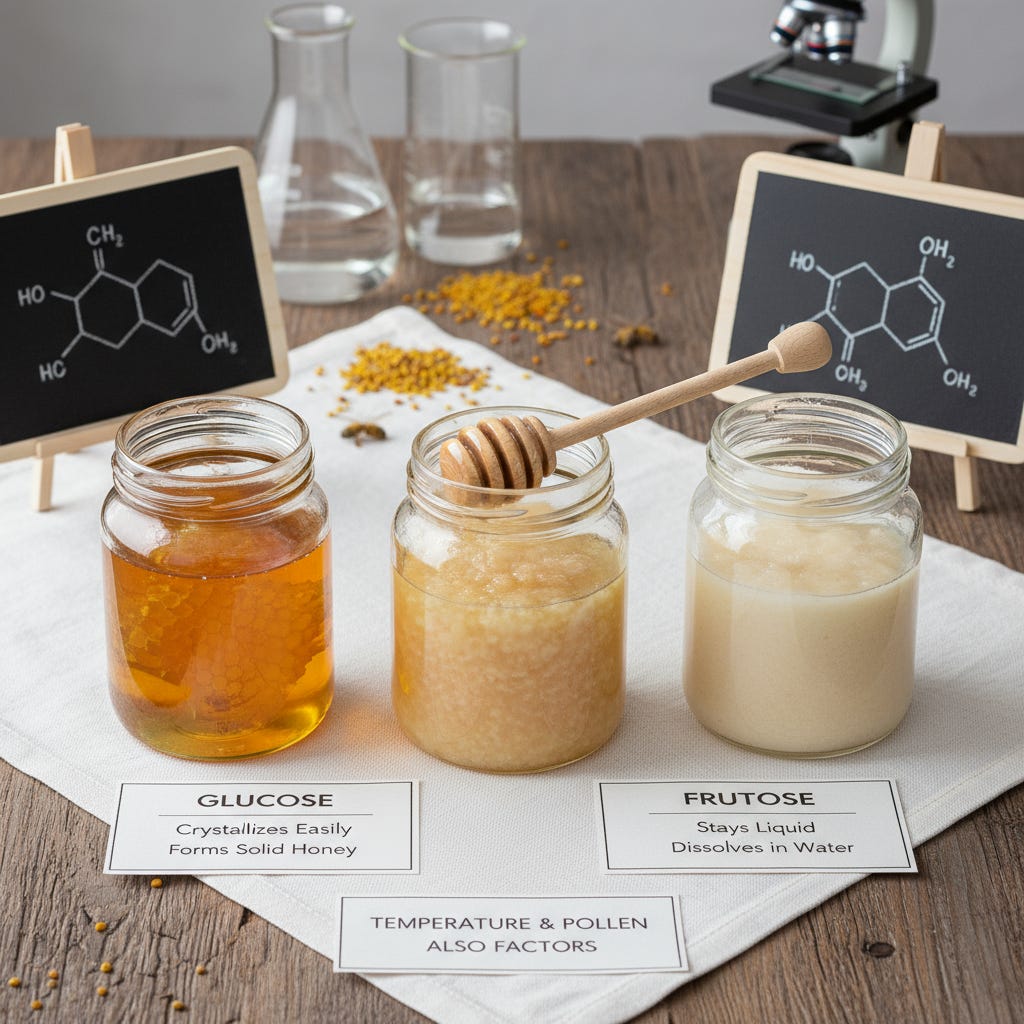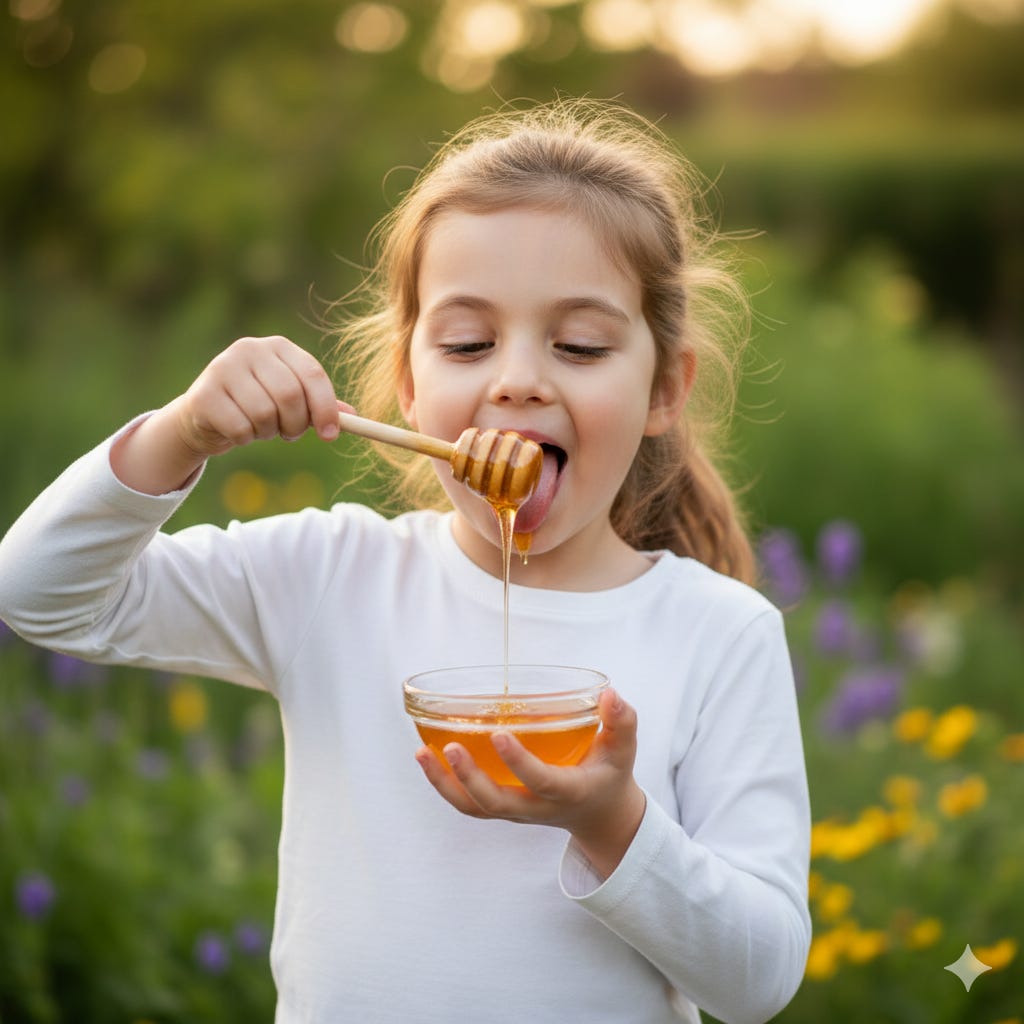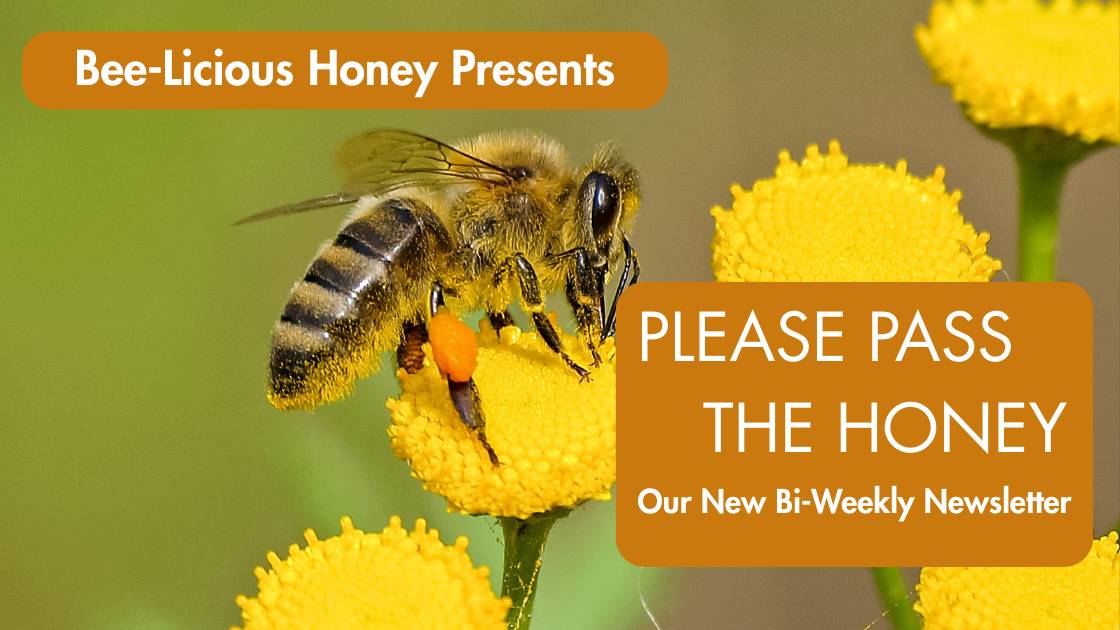Your guide to telling pollinators apart, enjoying honey in every form, and sparking curiosity for the next generation.
Bees and honey have so much to teach us—whether it’s spotting the difference between honeybees and yellowjackets, understanding why honey crystallizes, or sparking curiosity in kids through pollinator fun. Each little discovery deepens our love for the bees that make it all possible.
What are 3 physical traits that set honeybees apart from those pesky yellowjackets?

Let’s be honest—most people see a buzzing insect and think, “bee!” The mistake? Lumping honeybees and yellowjackets into the same category.
Friends of mine panic at anything striped until I explain the difference. Honeybees are pollinators and honey-makers. Yellowjackets are picnic crashers. By spotting the differences, you’ll save yourself a lot of stress and gain a deeper respect for honeybees.
While yellowjackets are responsible for thousands of painful stings in the U.S. each year, honeybees are vital to our food system, pollinating over 80% of flowering plants. One is a nuisance; the other is essential. Knowing their physical traits makes it easy to recognize who’s who in your backyard, so you can stop blaming honeybees for the bad behavior of yellowjackets. .
The Key Differences

It only takes a few clues to tell them apart:
- Fuzzy vs. Smooth Bodies: Honeybees are covered in tiny, fuzzy hairs that are perfect for trapping pollen. This gives them a soft, plump look. Yellowjackets, on the other hand, have a smooth, shiny body that looks almost like it’s been polished.
- Pollen Baskets vs. No Baskets: Honeybees have special “pollen baskets” on their back legs where they carry bright yellow clumps of pollen back to the hive. Yellowjackets are hunters and don’t collect pollen, so their legs are thin and clean.
- Purposeful vs. Erratic Flight: A honeybee’s flight is direct and steady as it moves from flower to flower. A yellowjacket’s flight is more erratic and aggressive—they zip, dart, and often circle people or food.
- Gentle vs. Aggressive Behavior: Honeybees are generally calm and will mind their own business unless their hive is directly threatened. Yellowjackets are known for being much more aggressive, especially when foraging.
Next time something buzzes by, use these checkpoints—it’ll change how you see them.
Why This Matters
Understanding the difference is about more than just trivial.
First, it keeps honeybees from getting an undeserved bad reputation. Second, it helps you stay calmer outdoors, because you’ll know whether you’re dealing with a pollinator or a pest. And third, it could save a honeybee from the quick demise of a spray bottle or insect killer when it wasn’t the real culprit at all.
We’ve all seen how a yellowjacket will dive straight into a soda pop, while honeybees stay focused on flowers. One causes frustration, the other keeps our gardens thriving. Once you see the difference, it’s hard to mistake one for the other.
Remember, every time a honeybee visits a flower, it’s helping create the very honey we love. They deserve the credit, not the blame.
So the next time you see stripes, pause before swatting.
Why Do Some Honeys Crystallize?

Q: My honey turned solid in the jar. Did it spoil?
A: Not at all! This is a common misconception. Honey almost never spoils when stored correctly. What you’re seeing is crystallization—a natural process where the sugars in honey (mainly glucose and fructose) shift from liquid to solid form. In fact, crystallization is a good sign that your honey is raw and natural. Many grocery-store honeys are heated and filtered to slow this process, but in doing so they lose beneficial enzymes and nutrients.
True spoilage in honey is rare and usually only happens if excess moisture gets in, which can cause fermentation. As long as your jar is sealed tightly and stored in a cool, dry place, your honey will stay safe and delicious for years.
Q: Why do some honeys crystallize faster than others?
A: It all comes down to sugar ratios. Glucose crystallizes easily, so the more glucose a honey has, the faster it will turn solid. Fructose, on the other hand, stays dissolved in water more easily, which means honeys higher in fructose will stay liquid for much longer.
Temperature and natural pollen also influence the speed, but the glucose/fructose balance is the biggest factor.
Here’s a quick guide to what you might find:

Q: Can I still use crystallized honey?
A: Absolutely! You can gently re-liquefy it by warming the jar in water no hotter than 104–110°F (40–43°C). Going hotter risks damaging the honey’s natural enzymes and flavor. You can also simply embrace it as-is! Many people love crystallized honey on toast because it spreads like butter. It also melts perfectly into your baking and tea.
Q: What about creamed honey? Is that just crystallized honey?
A: Great question! Creamed honey (sometimes called “whipped honey”) is raw honey that has been carefully controlled to encourage very fine, uniform crystals. The process involves seeding liquid honey with finely crystallized honey and gently stirring it. The result is a smooth, spreadable texture—never gritty, never runny. Our Bee-Licious Creamed Honey has a wonderful creamy texture and is especially popular for kids and for spreading on bread or crackers.
Final Thought: Crystallization isn’t something to “fix”—it’s a natural evolution that shows your honey is real and full of nutrients. Instead of fearing the crystals, enjoy them. Honey doesn’t spoil, it simply changes form.
3 Fun, Hands-On Ways Kids Can Learn About Pollinators

photo from Freepik.com
When kids spend time in the garden or in nature, something magical happens—they begin to see the world differently. Suddenly, that “little bug” on a flower becomes a busy worker collecting pollen, or that colorful butterfly becomes a messenger moving life from bloom to bloom.
But let’s be honest—telling kids about pollinators isn’t nearly as effective as showing them. The best way to spark curiosity is to make it fun, hands-on, and just a little bit surprising.
Here are three simple activities that turn learning about pollinators into an adventure:
1. The Pollinator Scavenger Hunt
2. Build a Bee Hotel

Give kids a bundle of hollow stems (like bamboo or reeds) that can be purchased at craft stores or online, tie them together, and place them in a sunny, sheltered spot. Solitary bees, like gentle mason bees, will move in and use them for nesting. It’s a craft project, a science experiment, and a conservation lesson rolled into one. Plus, checking back each week to see “who’s moved in” builds excitement and ownership!
3. Taste the Flower Connection

Set up a mini honey tasting with different varieties. For example, taste our Clover Honey and our French Forest Honey side-by-side. Explain how each honey comes from different flowers, and let the kids guess which one might be from a light vs. dark bloom. This activity connects what they see in the garden directly to what ends up on their spoon!
Want to make it even more engaging? Download our Honey Tasting Guide, which gives you simple tasting sheets and tips to turn this into a family activity. Kids love circling words to describe flavors—and you’ll be surprised at what they notice!
🌼 Try this at home: Choose one of these activities this weekend. You don’t need a sprawling garden—even a pot of flowers will do! Kids learn best when they can see, touch, and taste—and pollinators are the perfect teachers.

